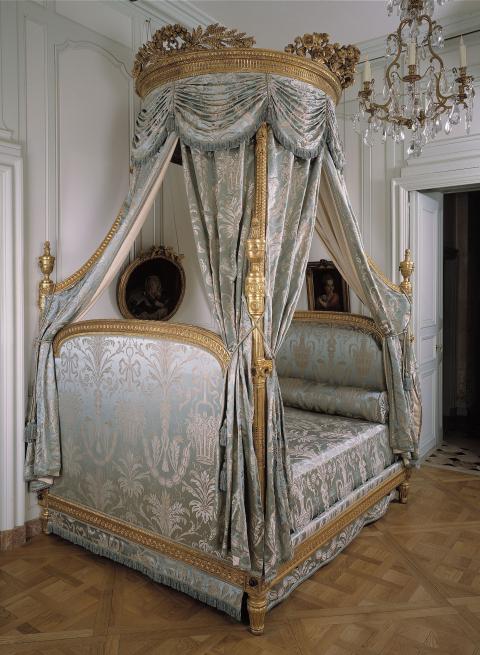A shiny blue taffeta adorns the canopy of this bed, patterned with branches and arabesques. This luxurious fabric, known as lampas, is a precious testimony of the era's tastes.
The canopy is held up by four curved uprights in the form of fluted columns, topped by antique urns. This decorative style, typical of the neoclassical style of the end of the 18th century, helps us date the furniture and attribute it to the cabinetmaker, Georges Jacob.
The carved decoration combines ancient and naturalistic elements. Interlaced rosettes, rais-de-cœur, pearls and acanthus leaves adorn the bed's gilded wood frame.
The bed crown is adorned with sculpted poppy flowers represented at various blooming stages. The flower is a symbol of Morpheus, known as the god of dreams in Greek mythology. It acts as a subtle reminder of the function of this piece of furniture.
Made in what is known as the Polish-style, this bed differs from French-style beds in which the canopy occupies the whole length and leans against the wall on the short side. An imposing piece, it was, however, mobile and had casters, which have since disappeared.












